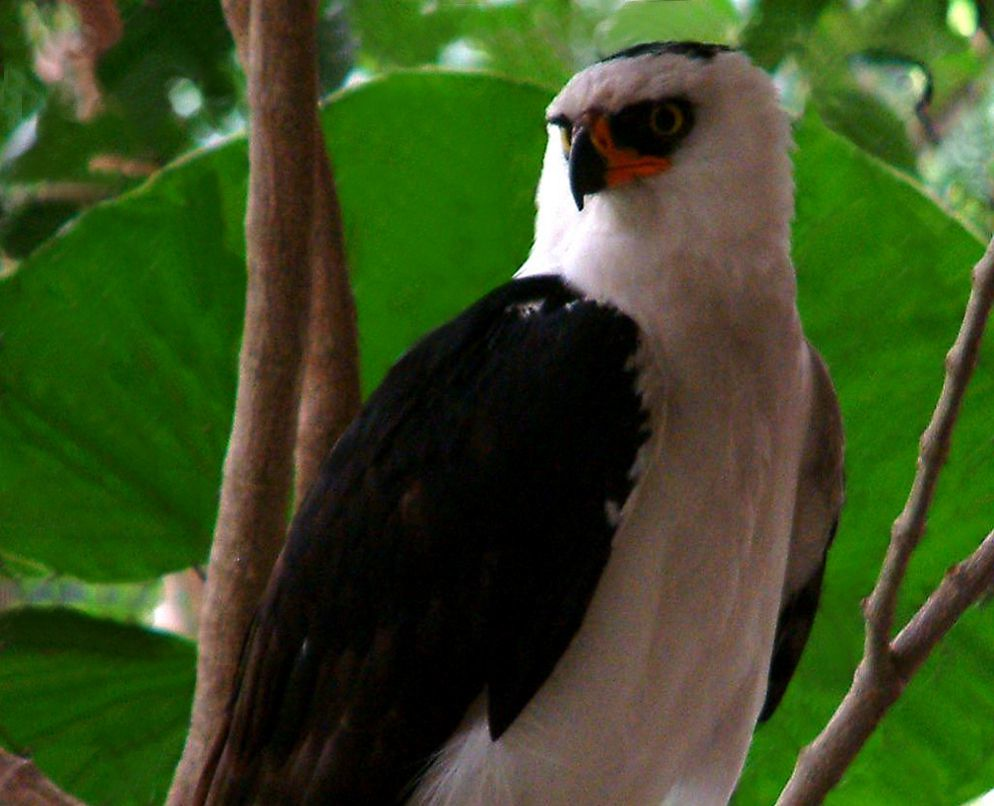Description: The Black and white hawk-eagle as the name suggests, is a black and white eagle with a small crest that forms a “skullcap-like” black spot on its head. Its head, neck and body are white, the wings are brownish-black and the grayish-brown tail is barred. The cere is orange and the eyes are yellow. The beak has a black tip. The feet are bright yellow with black talons. The sexes are similar, but females are larger.
Size: The Black and white hawk-eagle is 20-24 inches (51-61 cm) long, with a wing span of 43-53 inches (109-135 cm) and weighs approximately 1.7-1.8 pounds (0.77 – 0.82 kg).
Behavior: This eagle specializes in aerial hunting and maneuvers and soars gracefully above the canopy. These active birds take frequent short breaks as they perch on high branches, among the foliage in tall trees.
Diet: The diet of this carnivorous bird consists mainly of a variety of arboreal birds, but also includes mammals, toads and reptiles. They soar through the canopy looking for prey, and dive to catch their victim.
Communication: High-pitched scream-like sounds by the males have been recorded during breeding seasons. Up to five clear whistles have been heard, ending in a more clear, definite couple of notes.
Reproduction: Stick nests are built in the forest
canopy, often at heights of 130 feet (40 m). This large, cup-shaped structure (approximately 8 feet or 2.4 m in diameter) provides a lookout view of forest and open country for the birds. It is believed the female lays two white eggs that are spotted with brown and gray. Very little information is known about incubation/fledgling time.
Habitat/range: Their natural habitats are subtropical or tropical moist lowland and montane forests. They are found throughout a large part of tropical America, from southern Mexico to northern Argentina.
Status: It is listed by IUCN as Least Concern (LC); CITES Appendix II.



